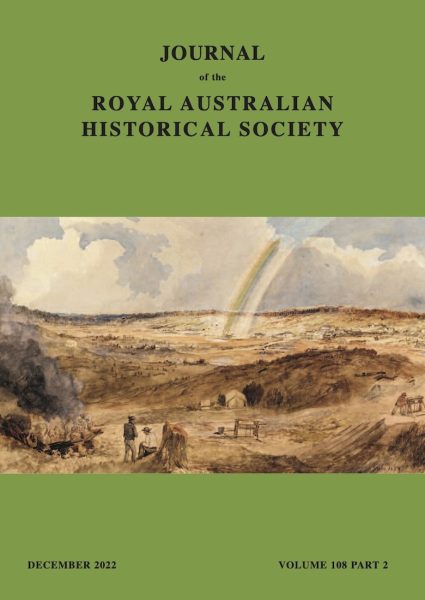Abstracts – JRAHS Volume 108 Part 2 December 2022
 ‘Extensive plans of immigration’: Governor Bourke and the beginnings of Australian assisted immigration, 1831-1838 – Richard Reid
‘Extensive plans of immigration’: Governor Bourke and the beginnings of Australian assisted immigration, 1831-1838 – Richard Reid
In that 299-word encomium on the public statue to the colony of New South Wales’ first Irish governor, Sir Richard Bourke, outside the State Library is the claim: ‘He raised the revenue to a vast amount, and, from its surplus, realised extensive plans of immigration.’ At a time when convicts were arriving in Sydney in unprecedented numbers, the reference here is not to the transportation of felons but the early development of that large program of government-assisted immigration, which within virtually ten years, changed the demographics of the colony from one based on convicts, emancipists and their children to one increasingly based on free immigrants. This article examines the extent to which Bourke can be credited with that change.
Bowral and the fraternity of ‘Noble Men’: Freemasonry in Bowral and the Southern Highlands of NSW – Alan Jacobs
Lodge Carnarvon is one of only two lodges that remain in existence in the Southern Highlands of NSW. The history of Lodge Carnarvon in Bowral is examined from its inauguration in 1888. Access to the internal records of Lodge Carnarvon and local newspapers enabled the author to make a detailed study of the membership, including demographics and professional backgrounds. The rise and fall of the membership of Carnarvon is placed within the context of the trajectory of all Freemasons under the United Grand Lodge of NSW. Lodge Carnarvon members exerted a decisive influence on the township of Bowral, but their membership of the fraternity usually was not disclosed or acknowledged. These men constituted the backbone of the business community and local government and helped to build the social capital of Bowral and its surrounds. In 1950 the Mayor (H.F. Venables) referred to one Carnarvon freemason (Joshua Stokes) as one of the Noble Four of Bowral. However, Stokes and the other Freemasons were not identified as members of the fraternity. Twenty-eight years later, the Shire President (Cr. Peter Reynolds) proclaimed that: ‘… members of the Council considered it an honour to accord to Lodge Carnarvon a civic reception in recognition of their support and involvement in the community for 100 years.’
Catholic Action, Sydney style: Catholic lay organisations from friendly societies to the Vice Squad – James Franklin
Sydney Catholics in the mid-twentieth century were organised into a large number of active and effective associations, from parish sodalities and professional guilds up to the Cahill government. Parish-based and larger organisations supplied a body of people accustomed to uniformity of beliefs and coordinated action in support of those beliefs, easily mobilised against Communism and in favour of Catholic moral and political positions. Pragmatic, informed by implicit moral views rather than explicit theory, and clerically controlled, Catholic Action in Sydney proved more able than its Melbourne counterpart in controlling the levers of political power. The Cahill government built on this organisational infrastructure to implement in law and policing a conservative moral agenda.
Protection or Persecution? Victoria’s Chinese Protectors – Rob Coutts
In 1855 the Victorian Colonial Government appointed Chinese Protectors. Taken as a whole, from 1855 to 1863, the Protectorate belied its name, but conversely, it is suggested that the British humanitarian movement influenced its creation and early implementation. A distinction is made between the Protectorate’s administration before and after the 1857 Chinese Residence Act. This Act aimed to charge (only) the Chinese a fee to continue living in Victoria or leave the country. The proposal is that the Protectorate was created and implemented with humanitarian intent until the 1857 Act re-purposed it into an instrument of revenue collection and persecution.
Thief or prostitute? Questioning the evidence against women transported to Australia – Kathrine M. Reynolds & Carol Liston
Accounts of women in Australia during the convict period are dominated by assumptions that many of the convict women had worked as prostitutes in Britain and continued to carry on their trade in the colony. The crimes that led to their transportation are overlooked or are assumed to involve prostitution. This paper investigates British sources about their crimes to understand the extent to which these crimes were associated with prostitution. Many of the women used the promise of sex to lure men into situations where they could be robbed. Building case studies around three convict ships, we trace the women’s crimes in Britain, seeking to determine if those crimes involved acts of prostitution and were the source of their designation as prostitutes.
